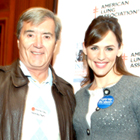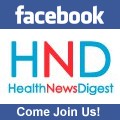1. A sudden cardiac arrest is the same thing as a heart attack.
 |
American Heart Association; NIH: National Heart, Lung, & Blood Institute
2. There is no way of knowing if you are at risk for a sudden cardiac arrest.
This is false - using your family history, your doctor can determine if you are at an elevated risk for sudden cardiac arrest. Speak with your physician to learn more.
Sudden Cardiac Arrest Foundation
3. There is nothing that can be done if someone's heart stops beating.
False - when a person's heart stops, cardiopulmonary resuscitation (CPR) can continue to circulate oxygenated blood throughout the victim's body helping to keep them alive. Using an automated external defibrillator (AED) can actually shock a heart back into its normal rhythm.
To learn more about the steps to take in an emergency, visit: http://www.heart.org/HEARTORG/Conditions/More/CardiacArrest/Warning-Signs-and-Emergency-Treatment-of-Cardiac-Arrest_UCM_307911_Article.jsp
NIH: National Heart, Lung, & Blood Institute; American Heart Association
4. You are better off waiting for professional help than performing CPR on your own.
YOU can save a life - just remember to push hard and fast in the center of the chest. Call 9-1-1 first to ensure emergency medical services are on the way. Often, the dispatcher can help talk you through performing CPR. For every minute that goes by without help, chances of survival decrease by 7 - 10%. Performing CPR can double or triple a victim's chances of survival.
Sudden Cardiac Arrest Foundation; American Heart Association
5. Automated External Defibrillators (AEDs) are for professional use only.
False - AEDs are designed so that they can be used by bystanders in an emergency, even if they haven't had any training. The most important step is turn on the device. Voice prompts will then talk you through the steps to defibrillation. This machine analyzes the victim's heart rhythm and decides whether or not a shock is needed. One study (Gundry, 1999) found that sixth graders were able to successfully use an AED without any training.
NIH: National Heart, Lung, & Blood Institute
###









